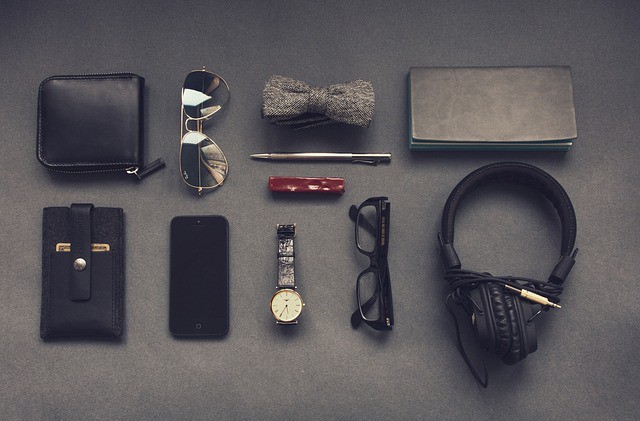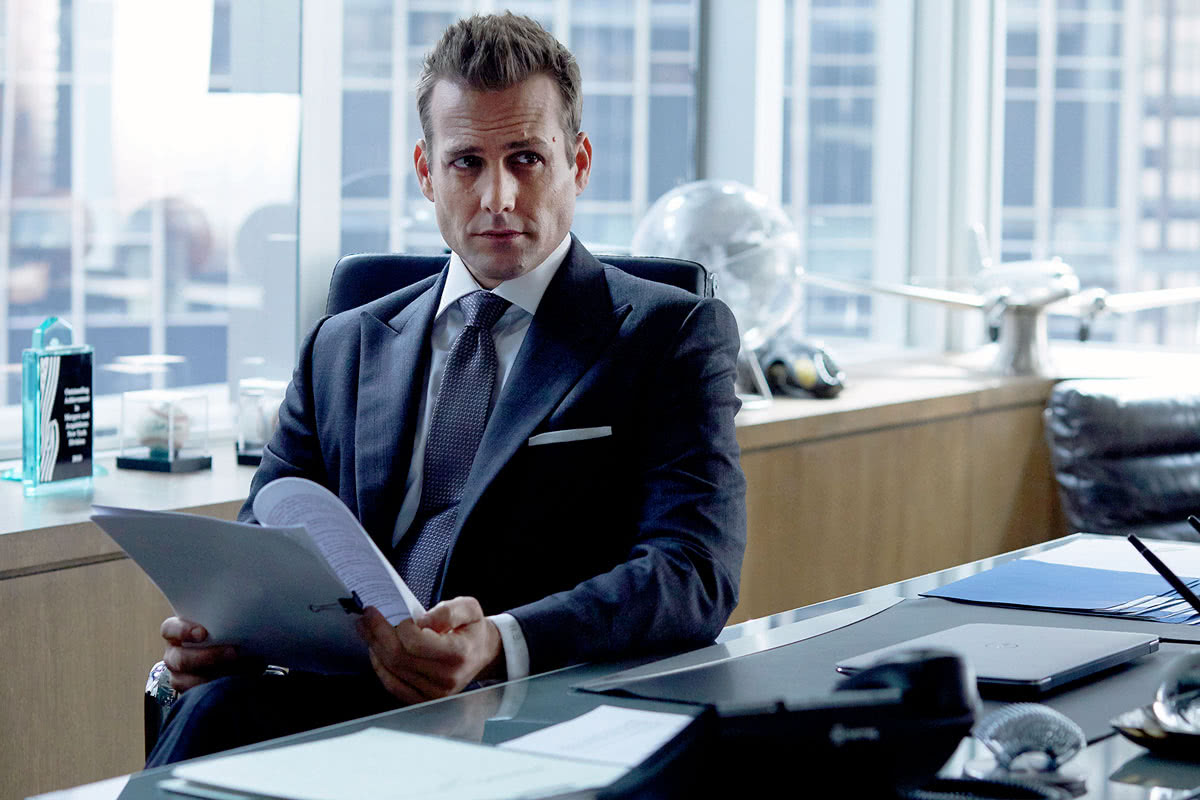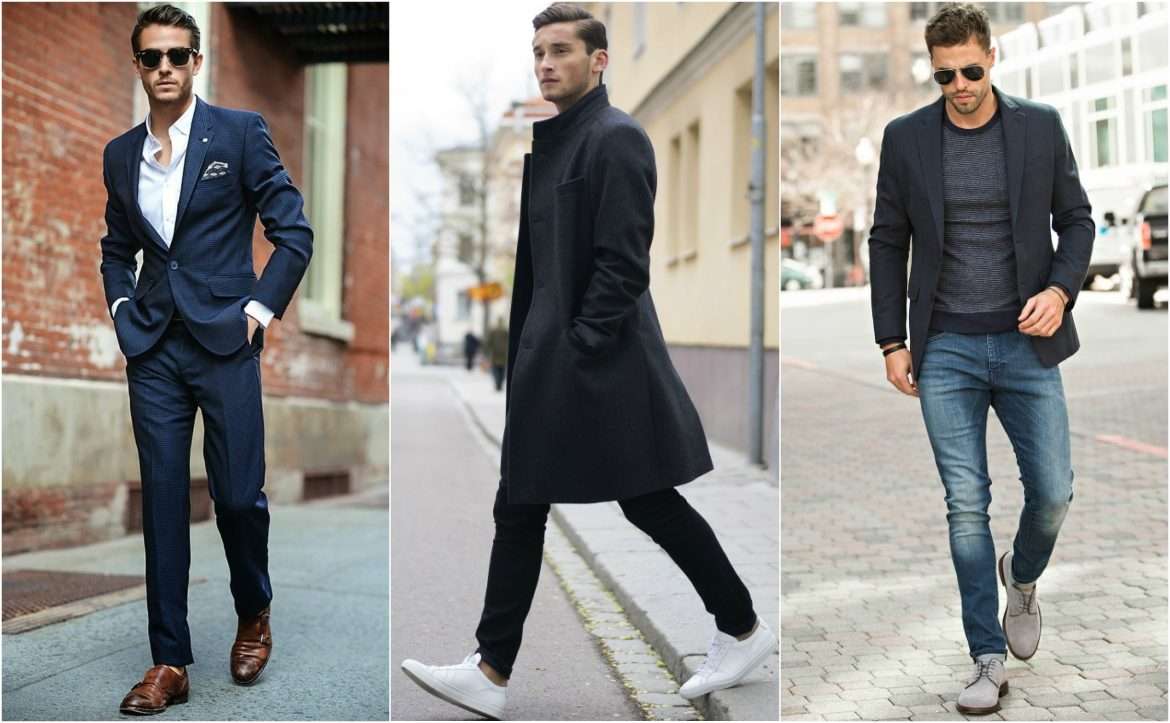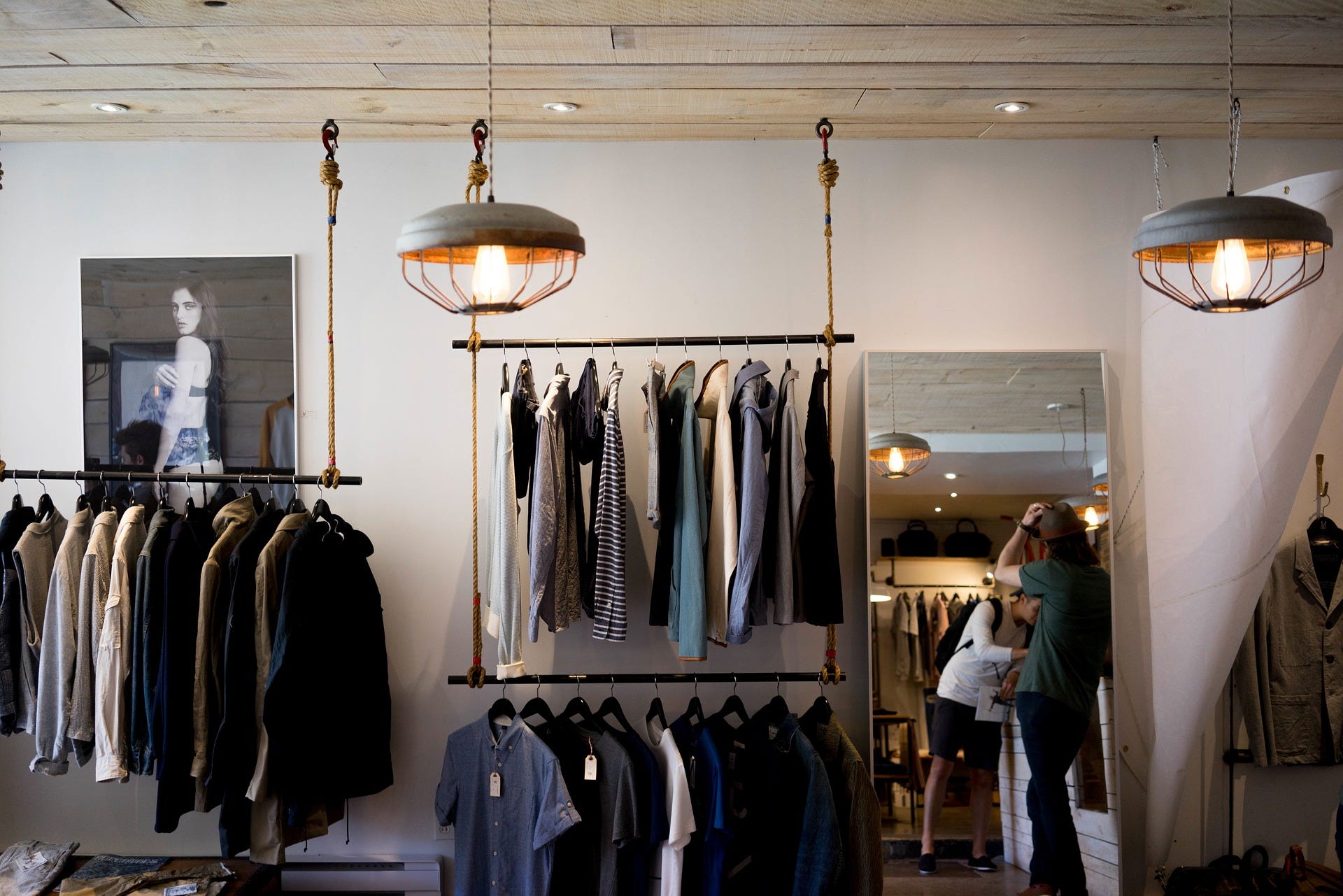Accessorize like a Pro Must-Have Items in Men's Wardrobe
"Accessories make an outfit stand out" said the famous designer Michael Kors. This idea shows just how essential men's fashion accessories are. In the fashion world the right accessories do more than go well with your clothes—they shape your whole look. Knowing how to pick and use accessories is vital for anyone wanting to boost their stylish men's wardrobe.
It's not enough to just have accessories; you need them to make your clothes come to life. Every part of an outfit like a cool pair of sunglasses a stylish belt or a sleek watch works together to make the whole look. These essential accessories for men are not just about looking good—they also show the world a bit of who you are. When you're going on a casual day out or to an important meeting the right items can make a big difference.
On trusted10.io we help you find the best accessories and clothes every man needs. If you want to make sure your closet is ready for anything this blog will show you what you need. From work to weekends learn how to dress with confidence and style.
Essential Accessories for Men
Belts
Belts are not just a practical tool for keeping your pants in place—they're a style staple in every man’s wardrobe. In order to understand belts this is what you must know:
- Types: You can choose from a variety of belts such as leather suede and canvas. Each type suits different occasions and outfits. Canvas belts provide a more relaxed look while leather belts are versatile and suitable for both casual and formal attire.
- Materials: While leather belts are a classic choice suede offers a soft more textured feel that is ideal for business-casual settings. Other materials such as canvas and ribbon inlay provide additional options for diversifying their style.
- Matching with outfits: It’s essential to match your belt with the occasion and your shoes. A slim leather belt generally works well with formal dress trousers. In contrast a wider belt with a big buckle pairs nicely with jeans for a casual look.
Watches
A watch is more than just a tool to tell time; it’s a significant element of personal style. Here’s a brief guide to watches:
- Types: From classic analogs to modern digital and smartwatches each type offers different features suitable for a variety of lifestyles and preferences.
- Brands: Some popular brands include Rolex Omega and Tag Heuer each providing distinctive styles and options across different price ranges.
- When to wear: For formal events choose a dress watch and for durable activities choose a sports watch. Casual watches are great for every occasion because of their adaptability.
Sunglasses
In addition to shielding your eyes from harmful UV rays sunglasses can be a fierce fashion statement. When shopping for sunglasses keep these things in mind:
- Shapes: Popular styles include aviators wayfarers and clubmasters. Choose a form that accentuates your best features. As an example square faces look great with rounded frames while round faces look great with angular ones.
- Colors: Classic colors like black brown and tortoise shells are versatile and easily integrated with any outfit.
- Choosing the right ones: Make sure your sunglasses complement your outfit by thinking about your face shape and the event you're attending.
Jewelry
Adding jewelry to a man's outfit is a great way to express his individuality and style. Here are a few pointers about men’s jewelry:
- Rings: For a subtle yet stylish look opt for simple designs such as a plain band or a ring with a small stone.
- Necklaces: A thin chain or a small pendant can add a layer of sophistication without being overpowering.
- Bracelets: Minimalistic bracelets whether leather or metal can nicely complement both casual and formal wear.

Must-Have Items in Men's Wardrobe
Creating the perfect wardrobe is essential for every man whether he is deeply invested in fashion or aims to enhance his style. Here’s a breakdown of must-have items every man should consider including in his wardrobe to ensure he’s ready for any occasion.
1. Suits
A well-fitted suit is the cornerstone of a man's wardrobe and is essential for numerous settings from formal events to casual meetings.
- Formal Events: Opt for dark-colored suits such as black or navy blue. These timeless choices convey sophistication. A classic two-button suit is versatile enough for various formal settings.
- Business Meetings: Grey and navy suits work best for business as they project professionalism while being versatile enough for various pairings. Sharp and timeless a one-breasted suit with a notch lapel is an excellent choice.
- Casual Occasions: Lighter colors such as beige or light gray make great choices for casual suits. Suits made of linen or cotton are great for warmer weather since they are comfortable and allow air to circulate.
2. Button-Down Shirts
In my opinion button-down shirts are the most classic and adaptable way to dress up any ensemble.
- Patterns: For a universally classic look that you can dress up or down stick to solid colors like white blue or gray. For a bit more flair consider subtle patterns like stripes or checks.
- Materials: Choose cotton for a comfortable everyday option or linen for a lighter feel that is ideal in hot weather.
- How to Wear: You can pair button-downs with either a suit or jeans. For formal settings tuck the shirt into dress trousers and for a casual look pair it with jeans and leave it untucked.
3. Jeans
You can't have a casual or semiformal wardrobe without jeans; they're that versatile.
- Cuts: Jeans should be tailored to the event; for a more contemporary look try slim jeans. In contrast straight-leg jeans provide a timeless look.
- Colors: Dark blue jeans are versatile and can be worn in casual and more upscale settings while black jeans provide a sleek edgy vibe.
- When to Wear: Jeans are suitable for a broad range of activities. Wear them with a dress shirt and heels for a more formal occasion or for a more relaxed look pair them with sneakers and a t-shirt.
4. Shoes
The right shoes are an accessory and the foundation of good style.
- Types: Dress shoes are perfect for formal events loafers offer a balance of comfort and style for various occasions and sneakers are ideal for casual everyday wear.
- Colors: Black shoes are best for formal events; brown shoes offer great versatility for different outfits; and white sneakers are perfect for a clean modern casual look.
- How to Match: Always match your shoes to the occasion—dress shoes with suits loafers with business casual outfits and sneakers with casual wear.
Each of these wardrobe essentials is critical to ensuring you are well-prepared for any event. You can always look your best by purchasing high-quality items and learning how to dress them.

Professional Men's Attire
For a good first impression at work it's important to dress properly. Whether you're attending a business meeting an interview or simply spending a regular day at the office the appropriate attire can greatly influence how others perceive you. In order to assist you successfully traverse the world of men's professional clothes we have compiled this handbook.
1. Colors and Patterns
Choosing the right colors and patterns for your professional attire is essential. They should reflect the industry and the specific occasion in which you work.
- Neutral Colors: Foundational colors for a business clothing should be black gray and navy blue. Because of their adaptability and classic style these colors go well with many different patterns and accessories.
- Bold Colors: You should use bold colors like red green and yellow sparingly to invigorate your outfit. Use a splash of color judiciously to keep things professional but don't skimp on it either.
- Patterns: Subtle patterns such as stripes checks and herringbone add a touch of sophistication to your attire. Ensure these patterns are manageable maintaining a balance that enhances rather than overwhelms your professional look.
2. Dress Codes
Understanding and adhering to the appropriate dress code is vital to professional dressing.
- Business Casual: This dress code offers more flexibility but requires a polished look. Pair khaki or chino pants with button-down shirts and perhaps a blazer. If you want to seem professional you should avoid wearing jeans t-shirts and shoes.
- Business Professional: A more formal dress code that necessitates a suit dress shirt tie and dress shoes. Choose dark suits white or light-colored shirts and conservative ties to ensure utmost professionalism.
- Formal Wear: For the most formal occasions such as galas or formal dinners opt for a tuxedo or a dark formal suit with a white or light-colored dress shirt and a conservative tie. This dress code exemplifies professional dressing where every detail counts.
3. Grooming Tips
Grooming is an integral part of your professional appearance. A well-groomed appearance complements any outfit and conveys an air of professionalism.
- Hair: Keep your hair clean neat and styled to suit the professional environment. Avoid extreme styles or colors that could distract from your professionalism.
- Facial Hair: Keep your beard clean and well-groomed if you want to wear it. Unkempt facial hair can detract from your professional image.
- Personal Hygiene: Good personal hygiene is non-negotiable. Regular bathing deodorant use and oral hygiene are all essential. Also be mindful of the cologne or perfume you choose—opt for mild fragrances that are not overpowering.
Following these guidelines ensures that your professional attire and grooming are on point enhancing your presence and credibility in any professional setting.
Tips for Accessorizing Like a Pro
Accessorizing is an art that enhances your outfits and showcases your style. If you follow these simple guidelines you can take any outfit to the next level and turn heads. Here’s how to accessorize like a pro and create a cohesive and expressive look.
1. The Rule of Three
This simple rule helps avoid over-accessorizing and ensures your outfit looks balanced and clear.
- Three Accessories: Limiting yourself to three essential accessories is a good rule of thumb. For example a watch a belt and sunglasses make for a balanced look. Alternatively a bracelet a necklace and a stylish hat can complement each other well without overwhelming your outfit.
- Balance: Think about the interplay between your accessories. If one accessory is particularly bold like a large watch balance it with subtler choices such as a slim belt or a small bracelet.
- Proportion: Wearing accessories that are proportional to your physique is important. Larger individuals opt for more extensive accessories which balance their visual presence. In contrast smaller or more delicate pieces can be perfect for those with a more petite frame.
2. Mixing and Matching
A well-accessorized look often involves clever mixing and matching of colors materials and styles.
- Colors: Aim for harmony in your accessories' colors. Accessories that are either in the same color family or are complementary to each other can help tie an outfit together. Consider the aesthetically pleasing combinations of black and brown or navy and green.
- Materials: Consider the aesthetically pleasing combinations of black and brown or navy and green. For example combining leather with metal or silk with cotton gives your style a rich layered feel.
- Styles: Coordinating different styles can also enhance your outfit. Depending on the look you're aiming for you might mix classic accessories with modern ones or blend minimalist designs with bohemian accents.
3. Personal Style
Ultimately your sense of style and self-assurance are best shown via your accessory selections.
- Individuality: Instead of buying into fads choose items that show who you are. If you love vintage pieces incorporate antique-style watches or classic hats into your wardrobe.
- Wardrobe Building: Amass a diverse assortment of accessories in a variety of colors styles and materials to make your collection more adaptable. Because of its versatility you may use it with a variety of outfits and for any event.
- Experimentation: Feel free to try out various combinations of accessories. Unexpected combinations may sometimes lead to the most unique and tailored styles.
Applying these tips allows you to accessorize like a pro enhancing your outfits with just the right touches that reflect your style and adapt seamlessly to various occasions.

Men's Style Guide
Creating a great style is about making sure your clothes match your personality and your everyday needs. To help you look great with little effort here is a simple approach.
1. Keeping Up with Fashion
It’s fun to add new styles to your wardrobe to keep things fresh. The newest style trends may be simply followed in this way:
- Look Around: Check out the latest styles online in magazines or at stores. Here are some suggestions for updating your wardrobe for a more modern style.
- Smart Shopping: Keeping up with the latest trends doesn't need a large budget. Shop at places that don’t cost much like discount stores or second-hand shops. Pick clothes that you can wear in many different ways.
- Try New Things: Explore different styles without hesitation. Who knows you may discover a new favorite!
2. Investing in Important Clothes
Some clothes are worth spending a bit more on because you’ll wear them a lot and they last longer.
- Good Quality: Select garments with sturdy construction to ensure they last for years to come. You won't have to buy replacements for them for a long time so the extra money is well spent.
- Multipurpose Clothes: Pick clothes that you can wear on many different occasions. For instance you can wear a nice jacket to a fancy event or simply go out to dinner.
- Timeless Pieces: Some clothes always look good like a simple suit a leather jacket or a white shirt. It’s smart to have these in your closet because they never go out of style.
3. Building a Basic Wardrobe
A small collection of essential clothes makes it easy to put together outfits without too much effort.
- Start with Basics: Begin with must-have items like a plain white shirt comfortable jeans and a versatile jacket.
- Seasonal Clothes: Add a few pieces for different weather like a light jacket for spring or a warm sweater for winter. This way you are ready for any season.
- Fun Accessories: Finish your look with some cool accessories like a watch a belt or sunglasses. These can make even simple outfits look special.
Create a look that is uniquely you while also being simple to maintain with the guidance of this guide. By keeping things simple and focusing on what you really like and need you can always step out feeling confident and looking great.
Conclusion
We've talked about a lot of helpful tips in this blog. We learned how to pick the right accessories with the Rule of Three how important it is to have certain clothes in your wardrobe like a good suit and a nice pair of jeans and how to dress smartly for work. We also covered how to find your style that shows off who you are.
It is now up to you to put these ideas into action! Play around with your appearance to see what feels right for you. Investing in well-made clothes that offer versatility is beneficial. Share your fashion advice with confidence whether it's in person or online. You might give someone else a great idea for their style!
Trusted10.io is a great place to learn more about men's fashion. Whether you need to update your wardrobe find the perfect accessory or just want style tips we've got you covered. See what's new here and find out how to upgrade your look.
